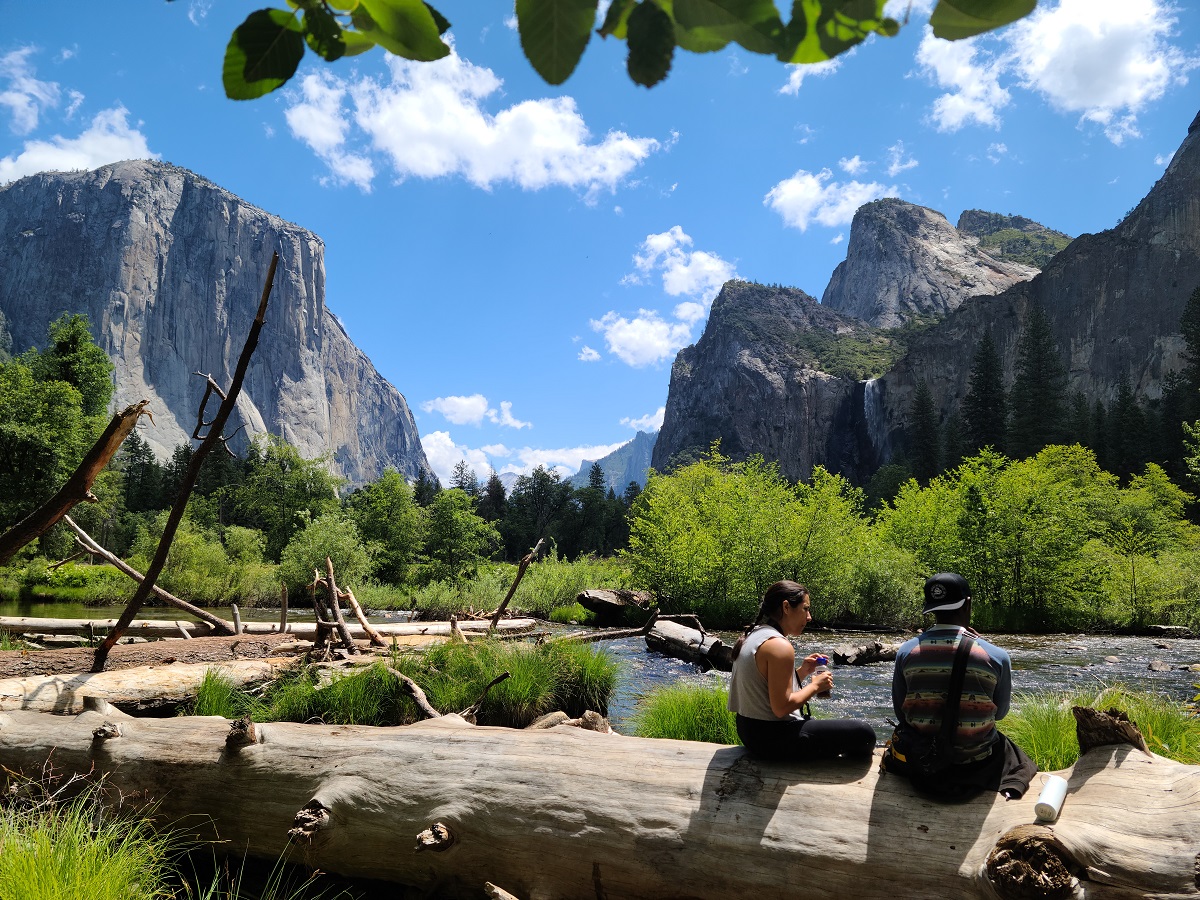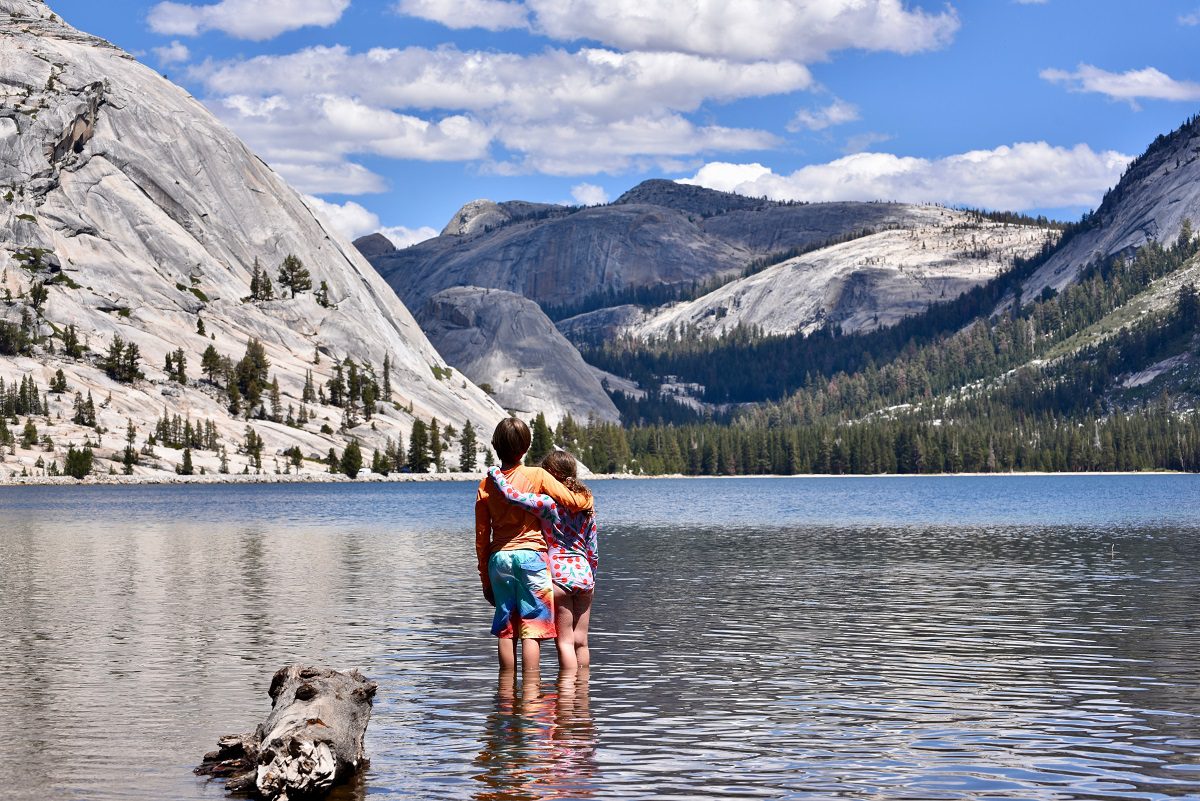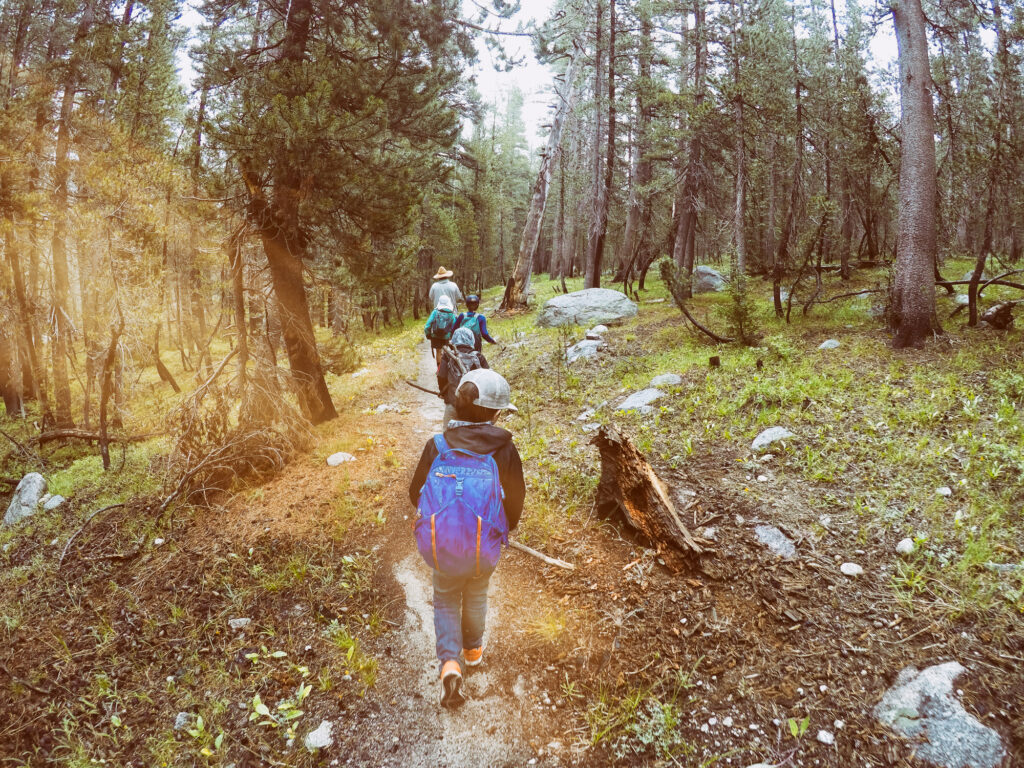Which Entrance to Yosemite is Best for Your Trip?
There are five entrances to Yosemite National Park – so how do you know which entrance to Yosemite is best for your trip? Each entrance offers access to unique trails and sights, from waterfalls and the reservoir in Hetch Hetchy to the Mono Basin National Forest Scenic Area through the Tioga Pass Entrance. Plan your perfect Yosemite trip with these tips and see what entrance will work best for you!
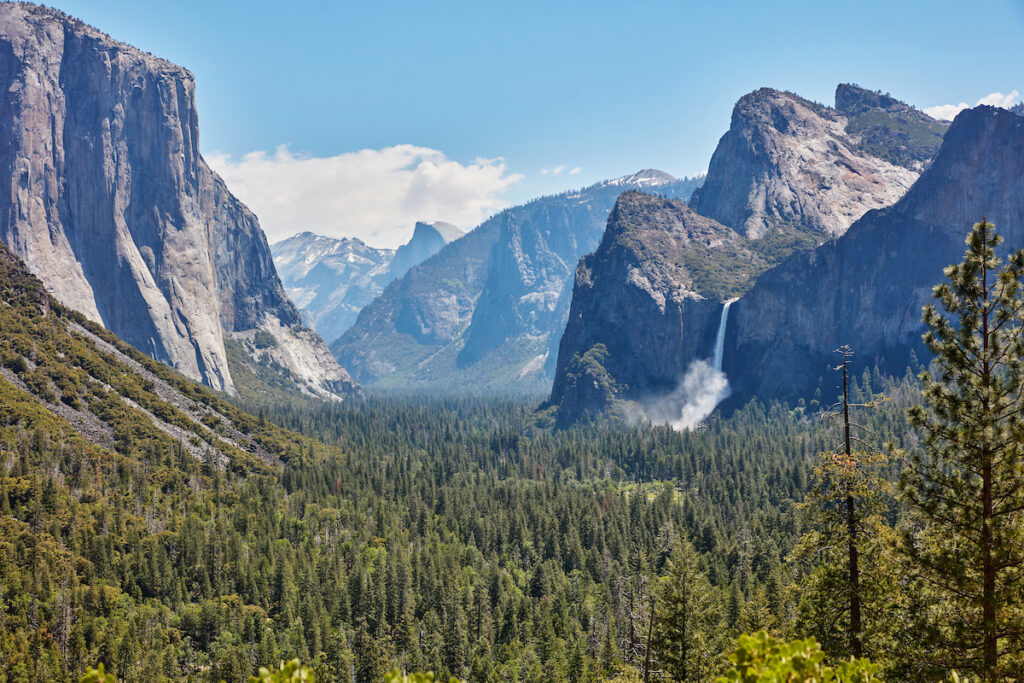
Big Oak Flat Entrance
Best for seeing Yosemite’s most famous sights.
If you want to explore Yosemite Valley, the best entrance at Yosemite is the Big Oak Flat Entrance. Just minutes from Rush Creek Lodge, this entrance to Yosemite gives you access to explore Yosemite Valley’s famous sights like Tunnel View, Glacier Point, and Yosemite Falls. The valley is surrounded by bucket list climbs Half Dome and El Capitan, where hikers watch experienced climbers scale these granite summits (or undertake it themselves with the proper permits).
You can also access Tuolumne Meadows through the Big Oak Flat Entrance of Yosemite National Park, following Tioga Road before the Tioga Pass Entrance of the park. Tuolumne Meadows holds a portion of the Tuolumne River, and is a popular spot in Yosemite for birdwatching, fishing, picnicking, stargazing, and photography.
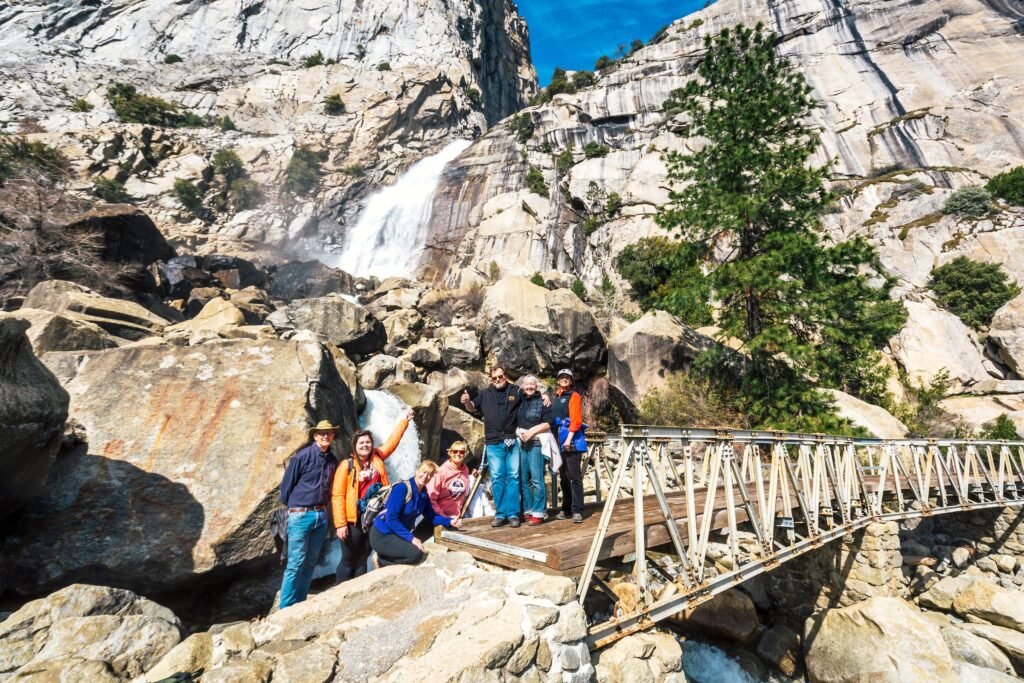
Hetch Hetchy Entrance
Best for encountering fewer crowds.
The Hetch Hetchy Entrance of Yosemite National Park is the best entrance for those seeking an extra peaceful experience in Yosemite. The farthest north of all the entrances to the park, the Hetch Hetchy Entrance typically has fewer crowds. There are fish in the majority of the lakes for fishing. Hetch Hetchy is also one of the best entrances to Yosemite for hiking due to the long hiking season (early spring through the fall) and access to many of the park’s hiking trails.
Not sure where to start? Let the experts at nearby Rush Creek Lodge guide you. You can enjoy a leisurely and fascinating 5 mile hike high above the shores of the Hetch Hetchy Reservoir on the Hetch Hetchy Wapama Falls Naturalist Hike while your knowledgeable guide shares history, science, and local lore you can’t find anywhere else. Learn more about our guided Yosemite National Park tours.
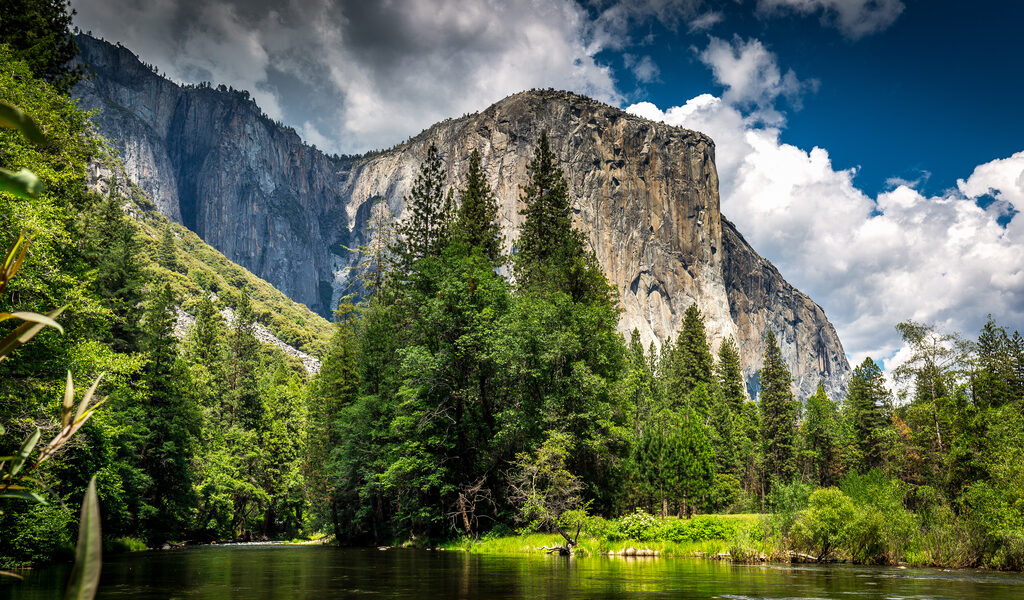
Arch Rock Entrance
Best for access to the center of Yosemite National Park.
Arch Rock Entrance welcomes visitors to the park with a unique rock feature that passes over the roadway. Arch Rock consists of two house-sized boulders that form an archway large enough for visitors to drive through. You’ll be close to the center of the park and many iconic sights like Yosemite Falls, Half Dome, and the Merced River when you use the Arch Rock Entrance.
Arch Rock Entrance is a direct route to Yosemite Valley, reachable via a gorgeous 10-mile drive. You’ll be treated to views of Bridalveil Fall, Pohono Bridge over the Merced River, and the iconic El Capitan.

South Entrance
Best for seeing the Giant Sequoias in Mariposa Grove.
If you’re traveling to Yosemite to see the Mariposa Grove of Giant Sequoias, the best entrance to the park is the South Entrance. This popular place to visit in Yosemite National Park is just 8 miles from the South Entrance, giving you access to the grove without driving through the whole park. Just before the entrance, you’ll find the South Entrance Information Station – there you can grab a park map and pay your entrance fee. You can also hop the free shuttle to Mariposa Grove from the Welcome Plaza, just two minutes from the South Entrance.
Inside the park, you can visit Wawona, a historic town that holds the Pioneer Yosemite History Center, historic buildings, and interactive experiences available during the summer. The historic town comes back to life with blacksmith demonstrations, horse-drawn carriage rides, and more.
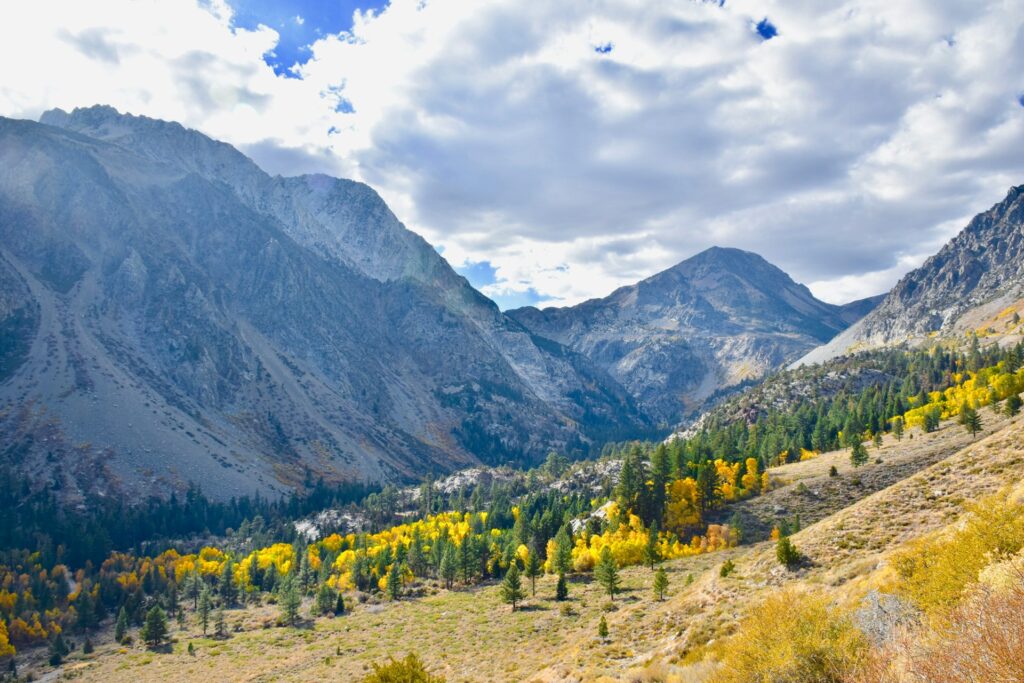
Tioga Pass Entrance
Best for access to Tioga Lake and Glacier Canyon.
The Tioga Pass Entrance to Yosemite National Park is the best entrance for access to Tioga Lake, Glacier Canyon, and the Ellery Lake Lookout. This entrance to Yosemite is only open during the summer, and offers easy access to outdoor activities like Tioga and Ellery Lakes and the stunning Tuolumne Meadows.
Glacier Canyon is less than a mile from Tioga Pass Entrance, and one of the most popular sights to see in Yosemite. This valley was carved by a glacier and now features stunning views of the surrounding cliffs and sparkling waterfalls. As you head deeper into the park, you’ll catch glimpses of Mount Dana’s towering peaks, see climbers scale Lembert Dome, and finally reach Tenaya Lake, an alpine lake surrounded by towering granite cliffsides.
No matter where you start in Yosemite National Park, you’re surrounded by breathtaking landscapes and opportunities for adventure at every turn. From cascading waterfalls and granite peaks to gentle rolling meadows and meandering streams, you can see it all in Yosemite National Park – save your precious exploring time when you stay nearby at Rush Creek Lodge, just minutes from two of Yosemite’s best entrances.
Frequently Asked Questions about Which Entrance to Yosemite is Best
Visitors to Yosemite wondering which entrance to the park is best will find different answers depending on their Yosemite itinerary. There are 5 park entrances, each offering access to unique trails and sights.
Which entrance is the best for Yosemite?
While the best entrance to Yosemite is dependent on what a visitor wants to see and do, one of the most popular entrances to Yosemite is Big Oak Flat Entrance. Great for seeing Yosemite Valley’s iconic sights like Tunnel View, Yosemite Falls, and Glacier Point, in addition to providing access to Tuolumne Meadows and prime viewing spots to watch hikers scale bucket list Yosemite climbs El Capitan and Half Dome.
Which is the best route to enter Yosemite?
The best route to enter Yosemite depends on where you’re going once inside the park! Arch Rock Entrance gives you access to the center of Yosemite National Park. Hetch Hetchy Entrance offers a less crowded Yosemite experience, while Big Oak Flat Entrance is the most popular and heaviest-traveled. The South Entrance is best for visitors who want to see the Giant Sequoias in Mariposa Grove, and Tioga Pass Entrance lives up to its name with access to Tioga Lake and Glacier Canyon.
Which Yosemite entrance for Tunnel View?
You can easily access Tunnel View via the Southern Entrance of Yosemite National Park. The Southern Entrance of Yosemite is about 45 minutes from Tunnel View by car. There are several ways to explore different viewpoints of Tunnel View, but the classic landscape seen in photography dating back to the early 1930s is accessed via the Southern Entrance.
What is the easiest drive into Yosemite Valley?
The easiest drive into Yosemite Valley is via Big Oak Flat Entrance. Just minutes from Rush Creek Lodge, this route gives you access to explore Yosemite Valley’s iconic sights like Glacier Point, Tuolumne Meadows, Yosemite Falls, and Tunnel View.
